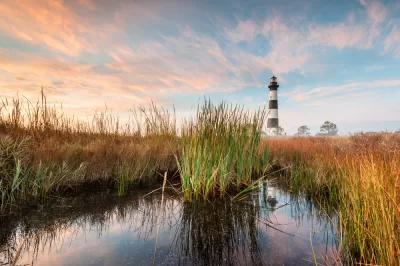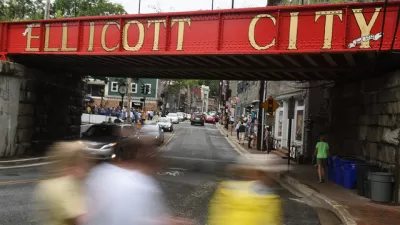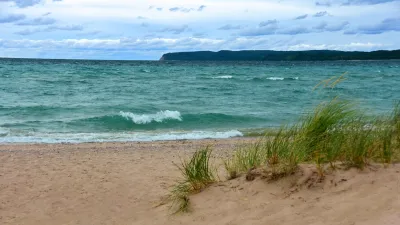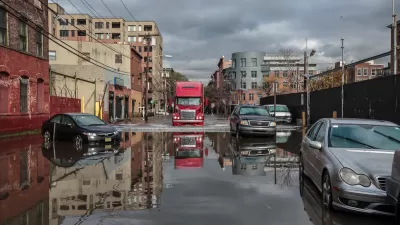The concept of ‘natural capital’ calls on policymakers to consider the value of natural infrastructure, which can often improve climate resilience without expensive construction projects.

In the April 2023 issue of Scientific American, the editors draw attention to how nature can be a tool for fighting the impacts of climate change. The article outlines the dangers of prioritizing development—including climate and weather mitigation measures such as levees or seawalls—over preserving natural features that can prevent erosion, limit the impact of flooding, and make coastal areas more resilient.
“Wetlands, coastal plains, sand dunes, forests, and many other permeable surfaces do cheaply (or even for free) what engineered levees, seawalls and pumps do at a cost of billions of dollars,” the editors explain. “They are vital infrastructure that makes us more resilient against climate change, and the cost of destroying them or weakening their ability to function must be factored into the decisions we make to build and grow.”
The article highlights the concept of “natural capital,” “the idea that ecosystem services should be valued in a similar manner as any form of wealth.” Because the economic value of nature—aside from usable resources like lumber and ore—has not been factored into policy decisions, may ecosystems have vanished. While it may seem crass to put a dollar value on what many consider priceless natural treasures, the editors argue we are at a point where it is necessary because “developers have long conflated pricelessness with worthlessness, allowing them to profit without paying for the consequences of destroying the environment.”
The article concludes, “Economic value is never the only reason nature is worth preserving; it is simply a powerful, underused tool to help us make decisions about how to live more sustainably in a climate-changed world.”
FULL STORY: Use Nature as Infrastructure

Planetizen Federal Action Tracker
A weekly monitor of how Trump’s orders and actions are impacting planners and planning in America.

Map: Where Senate Republicans Want to Sell Your Public Lands
For public land advocates, the Senate Republicans’ proposal to sell millions of acres of public land in the West is “the biggest fight of their careers.”

Restaurant Patios Were a Pandemic Win — Why Were They so Hard to Keep?
Social distancing requirements and changes in travel patterns prompted cities to pilot new uses for street and sidewalk space. Then it got complicated.

Platform Pilsner: Vancouver Transit Agency Releases... a Beer?
TransLink will receive a portion of every sale of the four-pack.

Toronto Weighs Cheaper Transit, Parking Hikes for Major Events
Special event rates would take effect during large festivals, sports games and concerts to ‘discourage driving, manage congestion and free up space for transit.”

Berlin to Consider Car-Free Zone Larger Than Manhattan
The area bound by the 22-mile Ringbahn would still allow 12 uses of a private automobile per year per person, and several other exemptions.
Urban Design for Planners 1: Software Tools
This six-course series explores essential urban design concepts using open source software and equips planners with the tools they need to participate fully in the urban design process.
Planning for Universal Design
Learn the tools for implementing Universal Design in planning regulations.
Heyer Gruel & Associates PA
JM Goldson LLC
Custer County Colorado
City of Camden Redevelopment Agency
City of Astoria
Transportation Research & Education Center (TREC) at Portland State University
Camden Redevelopment Agency
City of Claremont
Municipality of Princeton (NJ)





























